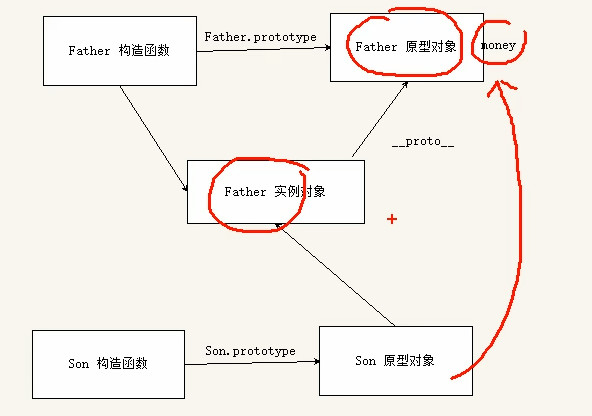<!DOCTYPE html> <html lang="en"> <head> <meta charset="UTF-8"> <meta name="viewport" content="width=device-width, initial-scale=1.0"> <meta http-equiv="X-UA-Compatible" content="ie=edge"> <title>Document</title> </head> <body> <script> // 借用父构造函数继承属性 // 1. 父构造函数 function Father(uname, age) { // this 指向父构造函数的对象实例 this.uname = uname; this.age = age; } Father.prototype.money = function() { console.log(100000); }; // 2 .子构造函数 function Son(uname, age, score) { // this 指向子构造函数的对象实例 Father.call(this, uname, age); this.score = score; } // Son.prototype = Father.prototype; 这样直接赋值会有问题,如果修改了子原型对象,父原型对象也会跟着一起变化 Son.prototype = new Father(); // 如果利用对象的形式修改了原型对象,别忘了利用constructor 指回原来的构造函数 Son.prototype.constructor = Son; // 这个是子构造函数专门的方法 Son.prototype.exam = function() { console.log('孩子要考试'); } var son = new Son('刘德华', 18, 100); console.log(son); console.log(Father.prototype); console.log(Son.prototype.constructor); </script> </body> </html>
